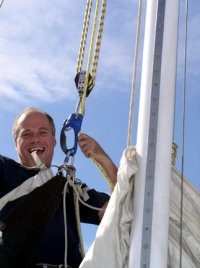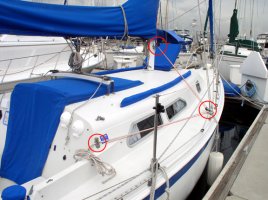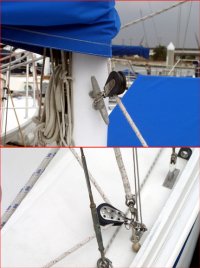sv.islandgirl
Member I
I have a 1977 E27. I would like to run the main halyard back to the cockpit but have 2 concerns and am seeking advice. Concern 1 is that I would need to attach some type of block near the base of the mast to turn the halyard towards the cockpit. I'm not sure if such an attachment would weaken the mast nor am I sure of the best way to attach the block to the mast. The second concern is is that I would have to attach a second block out on the coach roof to route the halyard around the companionway. I'm not sure how to attach a block to the coach roof without drilling through the roof and headliner (and thus detract from the interior). It looks like removing the headliner is a bigger project than I want to take on.



